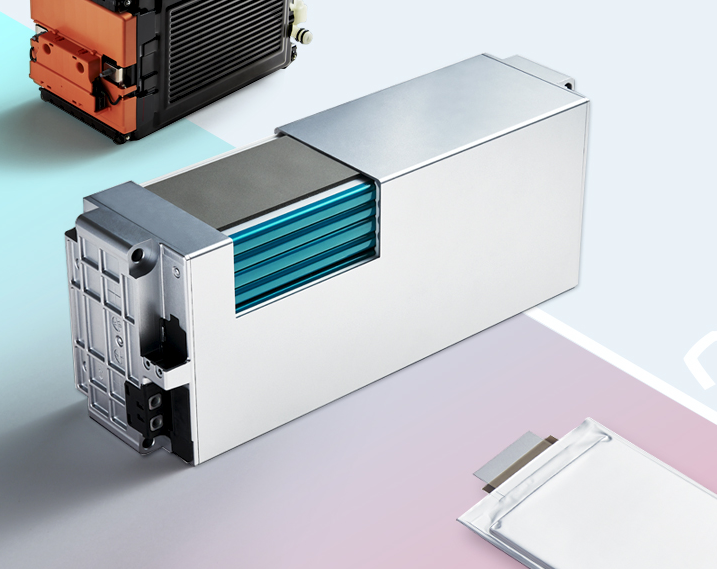Lead:
According to foreign media, LG New Energy is considering building two factories in the United States and will invest more than US$4.5 billion in US manufacturing operations by 2025; Samsung SDI is considering investing about 300 billion won to increase the battery output of its Tianjin battery plant. Samsung SDI also plans to invest 942 billion won in its Hungarian battery plant in 2021; South Korea SKI also announced that it will invest 1.3 trillion won to build its third battery plant in Hungary.
According to foreign media reports, on March 11, LG Energy Solution (hereinafter referred to as LG New Energy), a subsidiary of LG Chem, stated that it is considering building two factories in the United States and will invest more than US$4.5 billion in its production operations in the United States by 2025. , Can add 4,000 jobs.
LG New Energy said the investment could increase its battery production capacity in the United States by 70GWh, but declined to disclose the location of the new plant, saying only that it will decide the location of the plant in the first half of this year.
Recently, according to foreign media reports, two people familiar with the matter revealed that LG New Energy plans to start producing its advanced 4680 batteries for Tesla in 2023, and is considering building production bases in the United States and Europe.
Just last Thursday (February 4) General Motors stated that it is considering cooperating with its South Korean joint venture partner LG Chem to build a second battery plant in the United States. It is expected to make a decision in June.
GM confirmed that through its Ultium Cells LLC joint venture, it is “discussing the feasibility of building a second most advanced battery production plant in the United States” with LG New Energy.
According to two people familiar with the matter, GM and LG Chemical are in in-depth negotiations with Tennessee officials on the construction of the plant, which is expected to be located near GM’s Spring Hill assembly plant. The size of the new plant will be similar to its $2.3 billion joint venture battery plant in Lordstown, Ohio, which is currently under construction.
In addition, recently, Hyundai Motor announced that due to the risk of fire, it will voluntarily recall about 82,000 pure electric vehicles worldwide and replace the entire battery pack. On March 5, according to Korean media reports, Hyundai Motor and LG Chem have agreed to share the cost of the recall of 82,000 electric vehicles for battery replacement in a 3:7 ratio. The recall is estimated to cost 1.4 trillion won (approximately 8 billion won). Yuan Renminbi).
In addition to LG Chem, South Korean battery companies Samsung SDI and SKI have also successively announced production expansion news this year.
According to foreign media reports, on March 9, sources revealed that Samsung SDI is also considering investing about 300 billion won to increase the battery output of its Tianjin battery plant to meet the needs of the electric mobility market. Sources said that Samsung SDI may begin to expand its factory this year, and its focus may be on increasing the production capacity of cylindrical batteries to meet China’s soaring demand.
In February of this year, foreign media reported that Samsung SDI also plans to invest 942 billion won ($849 million) in its Hungarian battery plant in 2021. This investment will be used to expand the capacity of the first battery plant in the region (from 30GWh to 40GWh). ) And build its second battery plant in Hungary.
South Korea SKI also announced on January 29 that it would invest 1.3 trillion won (approximately US$1.16 billion) to build its third battery plant in Hungary. SKI stated that its third plant in Hungary will be a long-term project. By 2028, the total investment in this plant will reach 2.6 trillion won.
Prior to this, SKI built the first battery plant in Comeroon, Hungary, with an annual capacity of 7.5GWh, and the second battery plant is still under construction, with an annual capacity of 9GWh.
The current global annual production capacity of SKI is approximately 40GWh, and its goal is to increase the production capacity to approximately 125GWh by 2025.
According to the latest statistics of the global power battery market in 2020 released by South Korean analysis agency SNE Research, the global installed capacity of power batteries in electric vehicles will reach 137GWh in 2020, a year-on-year increase of 17%.
Among them, LG Chem ranks second in the world with an installed capacity of 31GWh, Samsung SDI ranks fifth in the world with an installed capacity of 8GWh, and South Korea’s SKI ranks sixth in the world with an installed capacity of 7GWh.
According to South Korean media reports, LG Chem, Samsung SDI, and SK innovation together accounted for 30.8% of the global market for the battery consumption of electric vehicles sold in January this year. In addition, according to the latest data released by the China Automotive Power Battery Industry Innovation Alliance on March 11, in the ranking of my country’s power battery companies in terms of loading volume in February, the only Korean company on the list, LG Chem, ranked third.
In addition, recently, the research institution EVTank and the China Battery Industry Research Institute jointly released the “White Paper on the Development of China’s New Energy Vehicle Industry (2021).” White paper data shows that in 2020, global sales of new energy vehicles will reach 3.311 million units, a year-on-year increase of 49.8%. The white paper predicts that global sales of new energy vehicles will reach 16.4 million in 2025, and the overall penetration rate will exceed 20%. In terms of power batteries, the white paper statistics show that in 2020, the global shipments of power batteries for new energy vehicles will reach 158.2GWh, and the demand for power batteries is expected to reach 919.4GWh by 2025.
With good expectations, a new round of power battery expansion peak is coming. In addition to Korean battery companies, domestic battery independent brands represented by the Ningde era are also accelerating their expansion, and will also drive equipment, positive and negative poles. The capacity expansion of the entire industry chain including materials, upstream cobalt-lithium resources, electrolytes, diaphragms, copper foils, and aluminum foils.
Post time: Mar-24-2021





